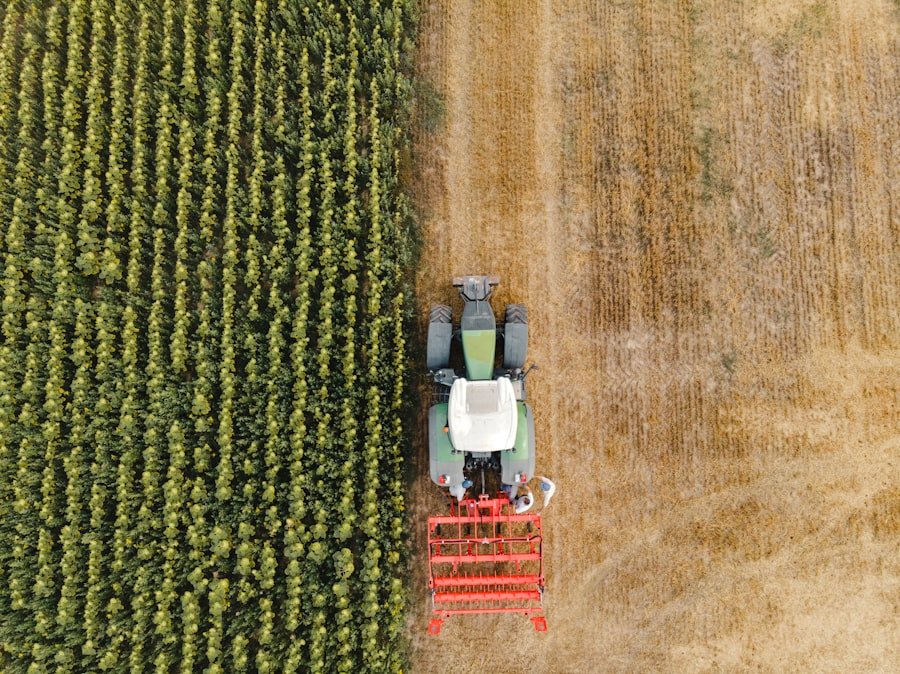Land reform policies are government initiatives designed to redistribute land ownership and usage rights, addressing social, economic, and political issues related to land ownership. These policies are frequently implemented in the agricultural sector, where land ownership and access to resources significantly impact the livelihoods of millions worldwide. The primary goals of land reform policies include reducing land ownership inequality, enhancing agricultural productivity, and promoting social justice.
However, the effects of these policies can vary considerably depending on the specific context of implementation. This article examines the historical context of land reform in agriculture, methods for evaluating its impact, and the economic, social, and environmental consequences of these policies. Additionally, it provides policy recommendations for improving the impact of land reform on agriculture.
Key Takeaways
- Land reform policies aim to address issues of land distribution, ownership, and use in agriculture.
- Historical context of land reform in agriculture includes various approaches and policies implemented over time.
- Methods for assessing the impact of land reform policies include economic, social, and environmental indicators.
- Land reform can have significant economic impacts on agriculture, including changes in productivity and income distribution.
- Social impacts of land reform on agriculture can include changes in land ownership, access to resources, and rural livelihoods.
- Environmental impacts of land reform on agriculture can include changes in land use, deforestation, and biodiversity loss.
- Policy recommendations for improving the impact of land reform on agriculture include addressing issues of land tenure, access to credit, and sustainable land management practices.
Historical Context of Land Reform in Agriculture
Land Reform in Recent History
In more recent history, land reform has been a key component of many countries’ efforts to address issues of poverty, inequality, and social justice. For example, in the 20th century, countries such as Mexico, South Korea, and Taiwan implemented land reform policies as part of their broader development strategies.
Objectives and Outcomes of Land Reform
These policies aimed to break up large estates and redistribute land to smallholder farmers in order to increase agricultural productivity and reduce rural poverty. However, the outcomes of these policies varied widely, with some countries experiencing significant improvements in agricultural productivity and rural livelihoods, while others faced challenges related to implementation and sustainability.
Challenges and Complexities of Land Reform
In some cases, land reform policies have also been associated with political instability and conflict, highlighting the complex nature of these initiatives.
Methods for Assessing the Impact of Land Reform Policies

Assessing the impact of land reform policies on agriculture requires a multidimensional approach that takes into account economic, social, and environmental factors. One common method for assessing the economic impact of land reform is through the analysis of agricultural productivity and income levels among smallholder farmers. This can be done through quantitative surveys and data analysis to measure changes in yields, income levels, and access to markets.
Additionally, qualitative research methods such as interviews and focus group discussions can provide insights into the social and cultural implications of land reform policies on rural communities. Furthermore, environmental impact assessments are crucial for understanding the effects of land reform on natural resources, including soil fertility, water usage, and biodiversity. By using a combination of quantitative and qualitative research methods, policymakers and researchers can gain a comprehensive understanding of the impact of land reform on agriculture.
Economic Impact of Land Reform on Agriculture
The economic impact of land reform on agriculture can be significant, with potential effects on agricultural productivity, income levels, and market access for smallholder farmers. By redistributing land from large estates to smallholder farmers, land reform policies can increase access to productive resources such as land, water, and credit, which can lead to improvements in agricultural productivity. Additionally, by providing secure land tenure rights to smallholder farmers, land reform can incentivize long-term investments in sustainable agricultural practices and infrastructure.
However, the economic impact of land reform can also be influenced by factors such as access to markets, input subsidies, and technical assistance. In some cases, smallholder farmers may face challenges related to access to markets and credit, which can limit their ability to fully benefit from land reform policies. Therefore, it is crucial for policymakers to consider these factors when designing and implementing land reform initiatives in order to maximize their economic impact on agriculture.
Furthermore, the economic impact of land reform on agriculture can also extend beyond the farm level to the broader economy. By increasing agricultural productivity and rural incomes, land reform policies can stimulate economic growth in rural areas and contribute to poverty reduction. Additionally, by promoting more equitable distribution of land and resources, land reform can contribute to reducing income inequality and promoting social inclusion.
However, it is important to note that the economic impact of land reform can vary widely depending on the specific context in which it is implemented. Therefore, policymakers should carefully consider the local economic conditions and market dynamics when designing and implementing land reform policies in order to maximize their positive impact on agriculture.
Social Impact of Land Reform on Agriculture
The social impact of land reform on agriculture is multifaceted, with potential effects on rural livelihoods, gender dynamics, and social cohesion within rural communities. By redistributing land from large estates to smallholder farmers, land reform policies can increase access to productive resources for marginalized groups such as women and indigenous communities. This can lead to improvements in household food security, income levels, and overall well-being for these groups.
Additionally, by providing secure land tenure rights to smallholder farmers, land reform can empower rural communities to make long-term investments in their farms and households. However, the social impact of land reform can also be influenced by factors such as power dynamics within rural communities, cultural norms related to land ownership, and access to social services. In some cases, land reform policies may exacerbate existing social inequalities or lead to conflicts within rural communities.
Therefore, it is crucial for policymakers to consider these factors when designing and implementing land reform initiatives in order to maximize their positive social impact on agriculture. Furthermore, the social impact of land reform on agriculture can also extend beyond rural communities to the broader society. By promoting more equitable distribution of land and resources, land reform policies can contribute to reducing social inequalities and promoting social cohesion.
Additionally, by empowering marginalized groups such as women and indigenous communities, land reform can contribute to promoting gender equality and social inclusion. However, it is important to note that the social impact of land reform can vary widely depending on the specific context in which it is implemented. Therefore, policymakers should carefully consider the local social dynamics and cultural norms when designing and implementing land reform policies in order to maximize their positive impact on agriculture.
Environmental Impact of Land Reform on Agriculture

Positive Environmental Impacts
Providing secure land tenure rights to smallholder farmers can incentivize long-term investments in sustainable agricultural practices such as agroforestry, organic farming, and soil conservation. This can lead to improvements in soil fertility, water retention, and biodiversity conservation. Furthermore, promoting sustainable land use practices among smallholder farmers can contribute to reducing deforestation, soil erosion, and water pollution in rural areas.
Challenges and Limitations
However, the environmental impact of land reform can also be influenced by factors such as access to technical assistance, input subsidies, and market incentives for sustainable agriculture. Smallholder farmers may face challenges related to access to knowledge and resources for sustainable farming practices, which can limit their ability to fully benefit from land reform policies.
Maximizing Positive Environmental Impact
Therefore, it is crucial for policymakers to consider these factors when designing and implementing land reform initiatives in order to maximize their positive environmental impact on agriculture. Policymakers should carefully consider the local environmental conditions and ecological dynamics when designing and implementing land reform policies in order to maximize their positive impact on agriculture. By doing so, land reform can empower rural communities to become stewards of their natural resources and promote environmental conservation.
Policy Recommendations for Improving the Impact of Land Reform on Agriculture
Based on the analysis of the economic, social, and environmental impact of land reform on agriculture, several policy recommendations can be made to improve the effectiveness of these initiatives. First and foremost, it is crucial for policymakers to ensure that land reform policies are designed and implemented in a participatory manner that takes into account the needs and priorities of smallholder farmers and rural communities. This can be achieved through inclusive decision-making processes that involve local stakeholders such as farmers’ organizations, indigenous communities, and women’s groups.
Additionally, it is important for policymakers to provide targeted support for smallholder farmers in the form of access to credit, technical assistance, market linkages, and input subsidies in order to maximize the economic impact of land reform on agriculture. Furthermore, it is crucial for policymakers to address gender disparities in access to land and resources by promoting women’s land rights and providing targeted support for women farmers. This can be achieved through legal reforms that recognize women’s rights to own and inherit land as well as through targeted programs that provide women with access to credit, training, and extension services.
Additionally, it is important for policymakers to promote sustainable agricultural practices among smallholder farmers by providing access to knowledge and resources for agroecology, organic farming, and soil conservation. This can be achieved through targeted extension programs that provide training on sustainable farming practices as well as through market incentives for environmentally friendly agricultural products. In conclusion, land reform policies have the potential to have a significant impact on agriculture by addressing issues related to inequality, productivity, and sustainability.
However, the effectiveness of these policies depends on a range of factors including economic conditions, social dynamics, and environmental considerations. By taking a multidimensional approach that considers these factors when designing and implementing land reform initiatives, policymakers can maximize their positive impact on agriculture and contribute to achieving broader development goals such as poverty reduction, gender equality, and environmental conservation.
For more information on the impact of land reform policies on agriculture, check out the article “The Role of Government in Land Reform” on The Econosphere’s blog. This article delves into the various ways in which government intervention can shape land reform policies and their effects on agricultural productivity.
FAQs
What is land reform?
Land reform refers to the process of redistributing agricultural land from large landowners to landless farmers or small-scale producers. It aims to address issues of land inequality, improve agricultural productivity, and promote social and economic development.
What are the common objectives of land reform policies?
Common objectives of land reform policies include promoting social justice, reducing rural poverty, increasing agricultural productivity, improving land tenure security, and promoting sustainable land use practices.
How do land reform policies impact agriculture?
Land reform policies can impact agriculture in various ways, including changes in land ownership patterns, access to land and resources, agricultural productivity, rural development, and income distribution. The impact can vary depending on the specific design and implementation of the policies.
What are some common types of land reform policies?
Common types of land reform policies include land redistribution, land tenure reform, land consolidation, land titling and registration, land taxation, and land use planning. These policies can be implemented through various mechanisms such as land redistribution programs, land reform laws, and institutional reforms.
How is the impact of land reform policies assessed?
The impact of land reform policies on agriculture can be assessed through various indicators such as changes in land ownership patterns, agricultural productivity, income distribution, rural development, and land tenure security. Assessment methods may include quantitative analysis, case studies, and stakeholder consultations.








